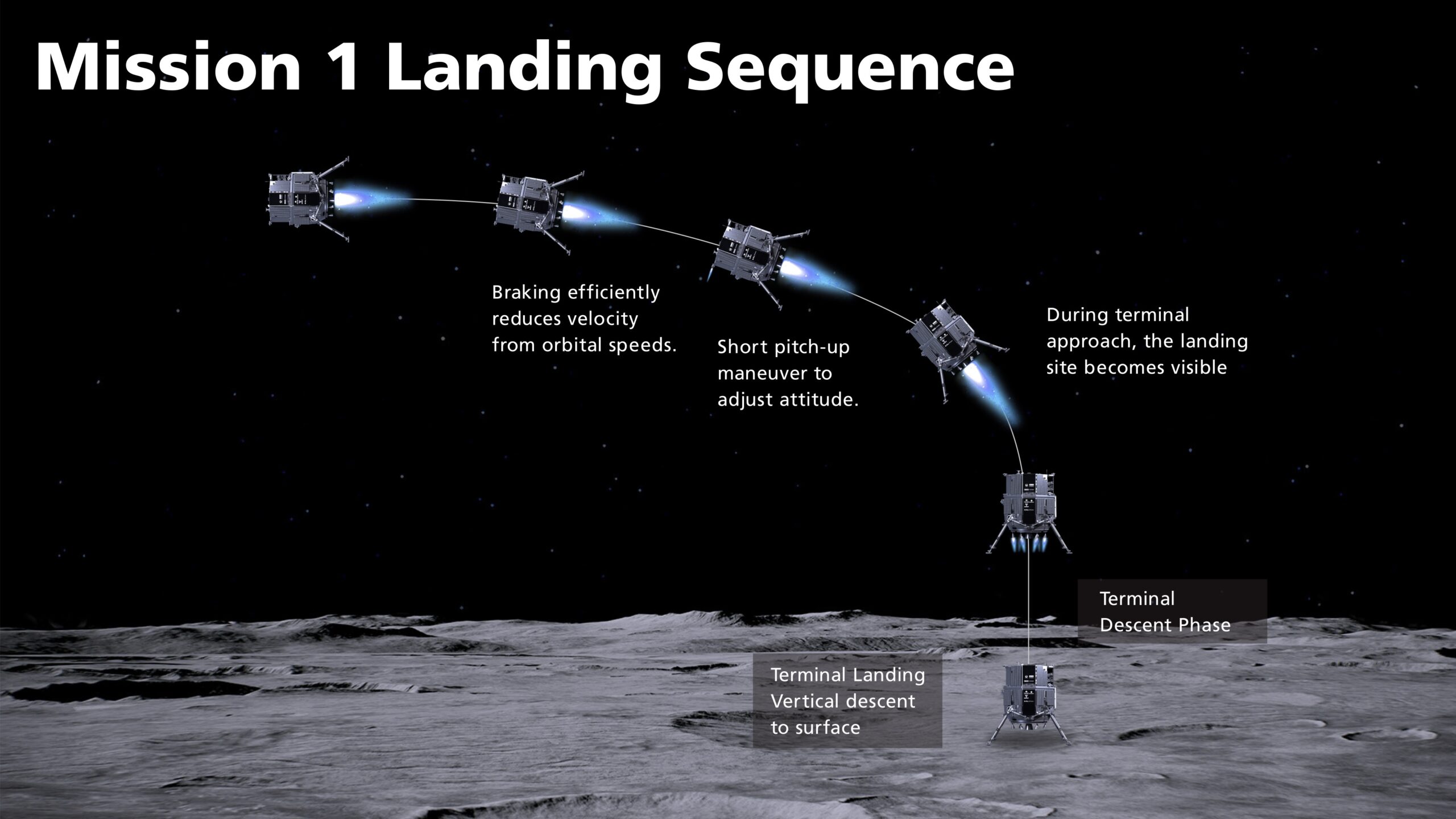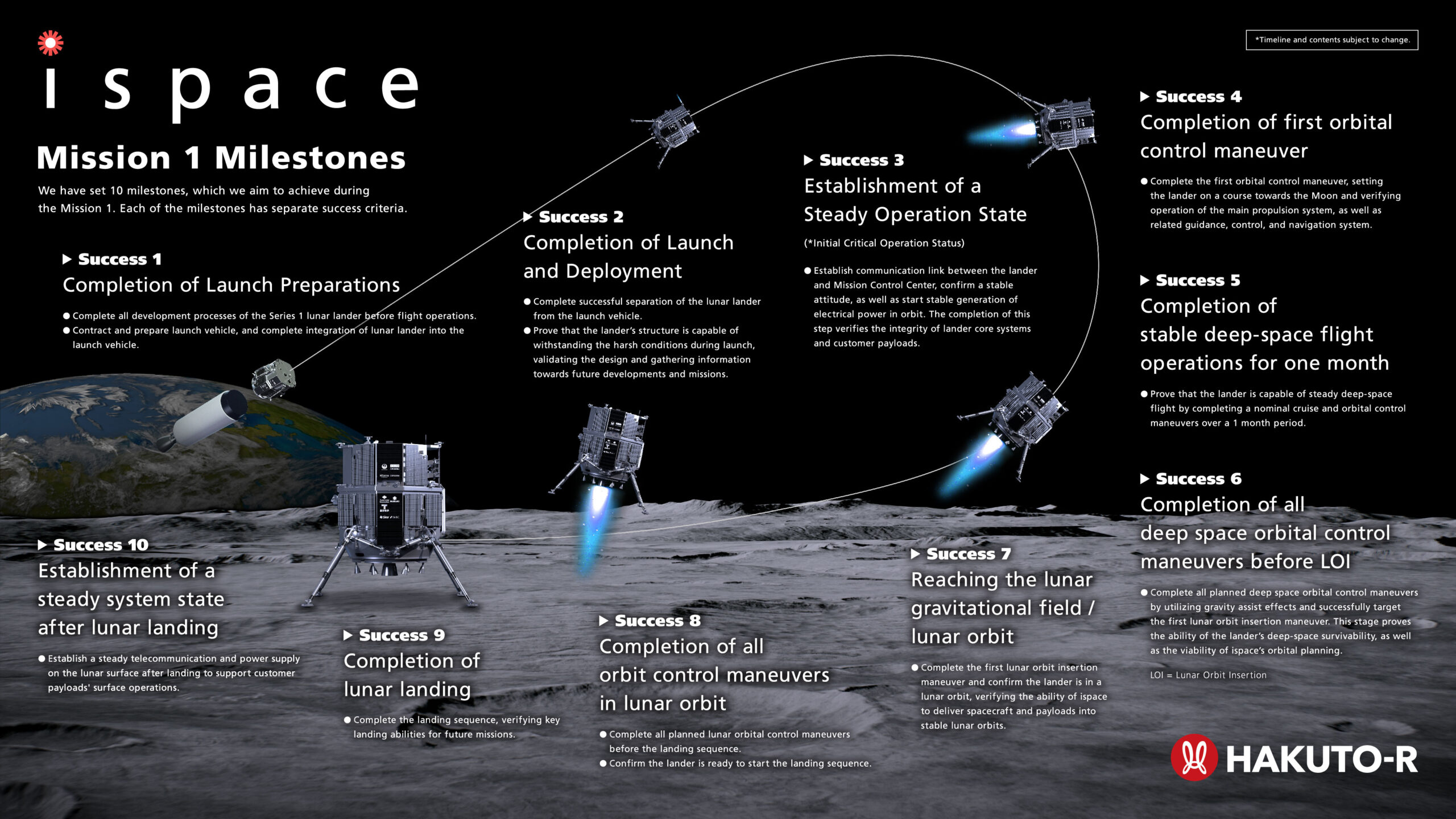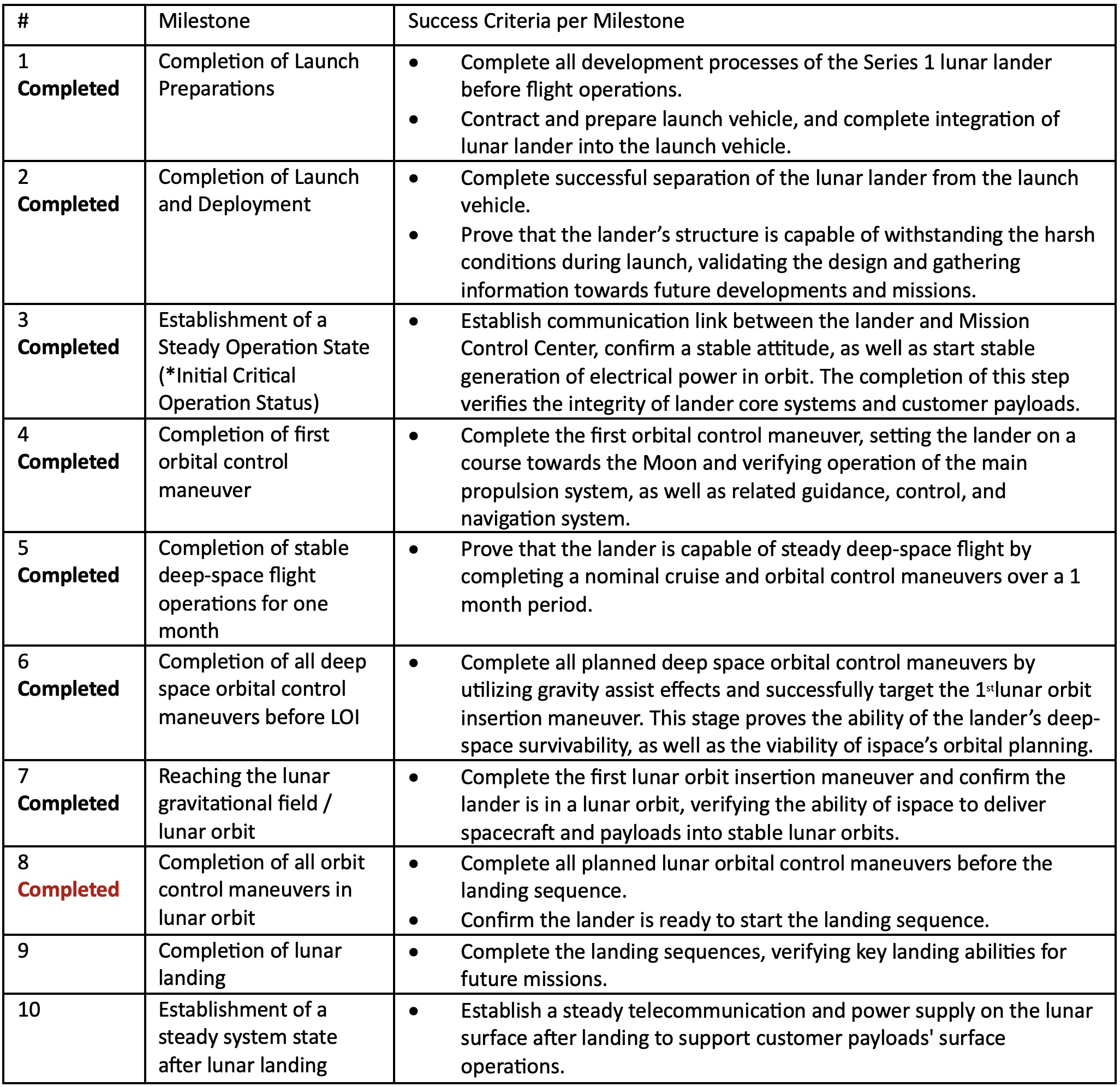14 Apr, 2023
All Maneuvers While in Lunar Orbit Now Complete
TOKYO—April 14, 2023—ispace, inc., a global lunar exploration company, announced today that its HAKUTO-R Mission 1 Lunar Lander has completed all planned orbital control maneuvers, completing Success 8 of the Mission 1 Milestones.
The Mission 1 Lander performed the final orbital control maneuver in accordance with the mission operation plan, at 10:08 (JST), on April 13, 2023, under the direction of ispace engineers at the HAKUTO-R Mission Control Center in Nihonbashi, Tokyo. After a controlled burn from the lander’s main propulsion system lasting approximately 10 minutes, the maneuver was successfully completed.
On March 21, 2023, the lander was successfully inserted into lunar orbit, orbiting the Moon in an elliptical orbit with an altitude of about 100 km at the perigee (periapsis) and about 6,000 km at the apogee (apoapsis), followed by two orbit control maneuvers. The lander has now reached a 100 km circular orbit around the Moon.
At approximately 15:40 on April 25, 2023, (UTC), the lander is scheduled to begin the landing sequence from the 100 km altitude orbit. During the sequence, the lander will perform a braking burn, firing its main propulsion system to decelerate from orbit. Utilizing a series of pre-set commands, the lander will adjust its attitude and reduce velocity in order to make a soft landing on the lunar surface. The process will take approximately one hour.
Should conditions change, there are three alternative landing sites and depending on the site, the landing date may change. Alternative landing dates, depending on the operational status, are April 26, May 1, and May 3, 2023.
Success 9, the next Mission 1 milestone, will be announced after a successful lunar landing is confirmed. Success 10, the last of the Mission 1 milestones, will be announced after confirmation that a steady telecommunications and power supply have been established after landing on the Moon.
A live-streaming broadcast from Tokyo is being planned for the landing day. More details will be announced once they become available.
 This diagram shows the steps the HAKUTO-R Mission 1 Lunar Lander will undergo during the landing sequence.
This diagram shows the steps the HAKUTO-R Mission 1 Lunar Lander will undergo during the landing sequence.
Mission 1 Milestones
For Mission 1, ispace has set 10 milestones between launch and landing, and aims to achieve the success criteria established for each of these milestones. Recognizing the possibility of an anomaly during the mission, the results will be weighed and evaluated against the criteria and incorporated into future missions already in development between now and 2025. Mission 2 and Mission 3, which also will contribute to NASA’s Artemis Program, will further improve the maturity of ispace’s technology and business model. Future announcements on progress of milestone achievement are expected to be released once attained.


About ispace, inc.
ispace, a global lunar resource development company with the vision, “Expand our Planet. Expand our Future.”, specializes in designing and building lunar landers and rovers. ispace aims to extend the sphere of human life into space and create a sustainable world by providing high-frequency, low-cost transportation services to the Moon. The company has offices in Japan, Luxembourg, and the United States with more than 200 employees worldwide. ispace U.S. is part of a team led by Draper, which was awarded a NASA Commercial Lunar Payload Services (CLPS) Program contract to land on the far side of the Moon by 2025. Both ispace, and ispace EU were awarded contracts to collect and transfer ownership of lunar regolith to NASA, and ispace EU was selected by ESA to be part of the Science Team for PROSPECT, a program which seeks to extract water on the Moon.
Established in 2010, ispace operated “HAKUTO”, which was one of five finalist teams in the Google Lunar XPRIZE race. The company’s first mission as part of its HAKUTO-R lunar exploration program launched on Dec. 11, 2022, from the United States on a SpaceX Falcon 9 rocket and is currently expected to land on the lunar surface on April 25, 2023 (UTC). Subsequent missions are in development with launches expected in 2024 and 2025. ispace has also launched a lunar data business concept to support new customers as a gateway to conduct business on the Moon.
For more information, visit: www.ispace-inc.com; Follow us on Twitter: @ispace_inc.